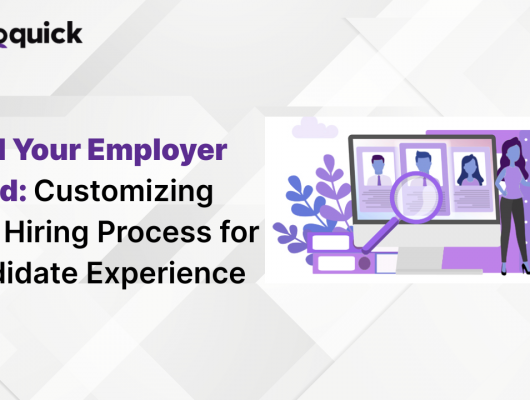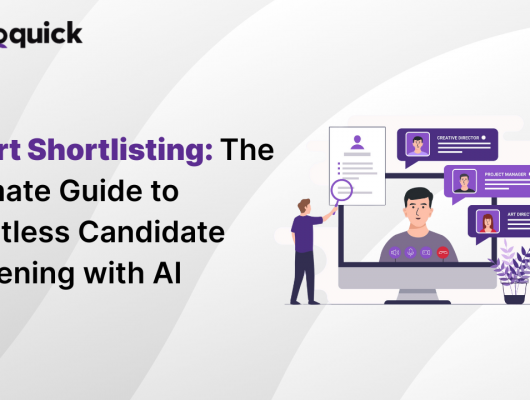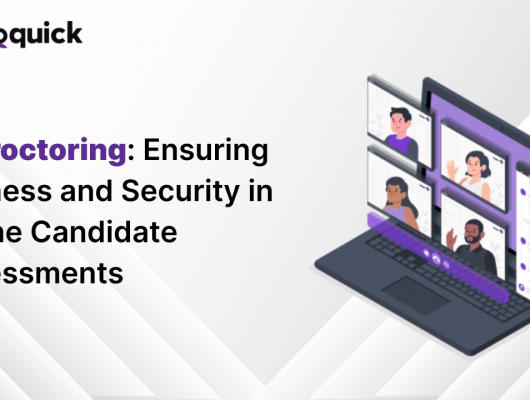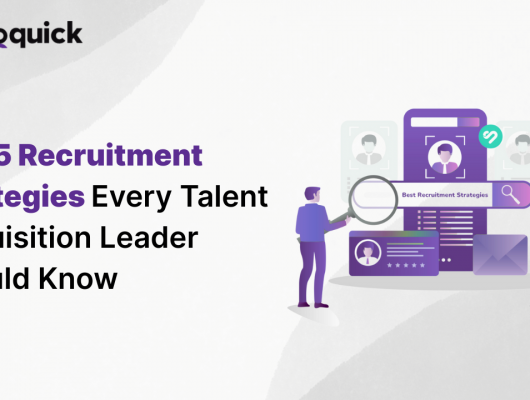Let’s be honest, does your hiring process ever feel… well, like wading through something really slow and sticky? You know, those frustratingly long hiring times, losing out on great candidates, costs just sort of creeping up? Those are often symptoms of a recruitment strategy that isn’t quite as efficient as it could be. Streamlining, when we talk about it here, really just means making that whole journey – from the very first job posting right through to getting someone settled in on their first day – smoother, quicker, maybe even a bit less painful, and definitely more effective.
This blog is really about diving into how you can optimize that entire process. We’ll explore how technology, especially powerful recruitment tools and clever AI solutions, can genuinely make a difference. Getting a handle on your recruitment process, mastering it really, feels absolutely critical these days with the competition for talent. It’s genuinely the key to finding and securing the best people out there. And it’s not just a hunch; places like SHRM point out that a really solid recruitment and selection process can actually have a huge impact on how well an organization performs. Read more on SHRM’s research on effective recruitment.
The High Cost of an Inefficient Recruitment Process
Look, a slow hiring process isn’t just… annoying, right? It’s genuinely hitting your bottom line. Think about it: every day longer it takes to hire someone? That pushes your cost-per-hire up. A bad experience for someone applying? That sticks, it really can damage your employer brand, meaning fewer great people even bother applying next time. And that top talent, the people you really want? They’re not waiting around, they’re slipping away to your competitors. You also end up wasting valuable time – yours, interviewers’ time – talking to candidates who, frankly, just weren’t the right fit.
All these little bits of wasted effort? They really do add up and hit your productivity, your profitability. Honestly, streamlining isn’t just a nice-to-have anymore; it feels pretty essential if you want to keep pace. It’s about getting smarter at every single stage, cutting out the waste, and getting the best results you can.
Understanding the Core Stages of the Recruitment Process
So, what does this ‘whole process’ actually look like? Typically, you can break down the recruitment journey into a few core stages.
- Job Requisition & Posting
- Candidate Sourcing & Attraction
- Application & Resume Screening
- Candidate Assessment & Interviewing
- Selection & Offer
- Onboarding
Now, here’s the thing: roadblocks can pop up literally anywhere in there. Finding where those bottlenecks are and tackling them head-on? Yeah, that’s absolutely key to making things run smoother.
Phase 1: Streamlining Job Posting & Attraction
Let’s start at the beginning, right? That moment you realize you need someone. Getting the job description clear, really nailing down the role and what’s expected? That’s foundational. And getting those approvals sorted – maybe using some clever workflow automation if your HR system allows it – just helps things move along.
Now, the job description itself. Don’t just write a list of skills, please! Think about painting a picture. What’s it really like working here? Talk about your culture, mention the perks, explain why this job matters, what difference they’ll make. Use simple, welcoming language so everyone feels included. Oh, and yes, think about keywords – you know, the terms people are actually searching for online – that helps people find you.
Posting strategically? It’s about knowing where your ideal candidate hangs out. Is it paid job boards? Free ones? LinkedIn? Maybe specific industry sites? Your own careers page is crucial too, of course. And honestly, don’t underestimate employee referrals – they can be gold. Using recruitment tools to blast it out to multiple places at once? Saves a ton of time. And definitely track which channels actually bring in the best candidates – you can tweak your strategy from there. A varied approach just gives you a better chance of reaching who you need to reach.
Phase 2: Streamlining Candidate Sourcing & Engagement
Okay, so you’ve posted the job. Now, how do you find those amazing people? Sometimes they apply, which is great, but often you need to go looking. Think LinkedIn Recruiter, digging through candidate databases you might have, tapping into professional networks. Proactively finding folks and even building up a list of potential candidates for future roles? Smart move. And when you reach out, make it count – think about getting their attention right away.
Now, the flip side – managing all those applications coming in. Without a system, it can feel like… well, drowning maybe? This is where an ATS, an Applicant Tracking System, is non-negotiable, honestly. It keeps everything organized. Make sure it automatically tells candidates you got their application – that basic communication goes a long way and helps manage expectations. And seriously, check that it’s easy for everyone to use, candidates included.
Beyond just this one role, it’s really smart to build relationships. Even if someone isn’t the perfect fit this time, keep in touch! Good recruitment software often has CRM features built in specifically for this – nurturing those connections. Because, let’s be real, how you treat candidates leaves a lasting impression, and a good one helps your brand.
How does AI fit in here? It’s getting pretty clever. AI can help match candidates to roles super fast based on your criteria. It can even help spot passive candidates who aren’t actively applying but might be a great fit based on their online presence. And automating some of those initial emails? That frees up time, as long as you make sure they sound, you know, human and personalized.
Phase 3: Streamlining Candidate Screening & Evaluation
So, you’ve got applications flowing in. Time to screen. Moving past just buzzwords on a resume is key. Smart use of keyword filters in your recruitment tools helps, sure. And AI is getting surprisingly good here, flagging top candidates based on criteria you set. ‘Knockout’ questions upfront? Yeah, they can feel a bit blunt sometimes, but they save everyone time by quickly identifying folks who clearly don’t meet the basic requirements.
Assessments? They’re not just for coding anymore. Think tests for skills, maybe language ability, even personality profiles or how someone might fit the team culture. Integrating these platforms and automating the scoring and ranking saves a huge amount of manual work. Short video intros? Can be a good initial filter too, giving you a quick feel for someone.
A really important point is tackling bias. Making sure everyone is evaluated against the same criteria, using structured approaches? That helps a lot. Things like blind screening where possible, stripping out identifying info, or just using technology designed to promote objectivity – it’s something we should all be mindful of.
Honestly, the right recruitment tools, especially those with good screening features and AI capabilities, can seriously cut down the time spent here and help you spot those promising candidates more accurately. They really can revolutionize this part.
Phase 4: Optimizing the Interview Process
Okay, interviews. To keep things fair and consistent, having a structured approach really helps. I mean, everyone asking roughly similar questions, ideally with a guide – think behavioral, situational, technical stuff – and making sure interviewers actually know how to interview effectively? That makes a huge difference to the quality of the evaluation.
Scheduling tools that sync with calendars are a lifesaver. And letting candidates book their own slot? People generally appreciate that convenience, and it saves you administrative hassle.
Video interviews are pretty standard now, and for good reason. Great for initial chats or when people are remote – saves time and travel costs. Just make sure you’re using a reliable platform and that everyone’s comfortable with the tech and knows the best practices for a virtual interview.
Getting feedback back promptly? Yeah, that can be a challenge. Using digital scorecards within your system makes it easier to collect it in one place and standardizes the input. Set deadlines! And having a way for the team to easily discuss candidates, maybe digitally, collaborate on their evaluation? Super important for making a good, collective decision.
Phase 5: Making Data-Driven Selection Decisions
Alright, decision time. It’s tempting to just go with your gut, right? But using those scorecards and rubrics we talked about earlier? That helps ensure you’re really comparing everyone against the same things, objectively weighing up skills, experience, how they seem to fit the role and the team. It just leads to better choices, I think.
Getting the hiring team on the same page quickly is huge. If people are scattered, sharing notes by email, waiting for responses… decisions just drag. Having a shared space in your recruitment software where everyone can see feedback, add comments, and give approvals? That speeds things up and avoids confusion and delays. You want everyone literally on the same page.
And don’t forget the data! Look at where candidates are perhaps dropping out of the process – is there a tricky stage you need to fix? What does the feedback across the board tell you about the role or your screening? Using analytics here can genuinely give you insights that help you fine-tune your selection process going forward.
Phase 6: Expediting Offers & Negotiations
Okay, you’ve picked someone! Speed is absolutely critical now; you don’t want to lose them while you’re sorting paperwork. Having templates for offer letters ready to go in your system? Big time saver. And getting those approvals automated so you’re not chasing people down? Essential for a quick turnaround.
Electronic signatures? Honestly, if you’re not using them, what are you waiting for? They cut out so much back-and-forth and get that offer signed way faster and easier for everyone involved. Closing the deal becomes so much more efficient.
And during this stage, keep the communication clear! Handle negotiations professionally and relatively quickly. You want the candidate to still feel engaged and excited about joining your team, right? Don’t leave them hanging or make them feel like an afterthought.
Phase 7: Seamless Onboarding for Retention Success
Alright, they’ve accepted! Fantastic! But the job isn’t quite done yet for recruitment, is it? Getting that new hire smoothly transitioned to the HR or onboarding team? Absolutely vital. You want it to feel seamless for the person starting, not like they’ve been forgotten or dropped after the offer is signed. Connecting recruitment to onboarding really matters.
Think about automating some of the stuff before day one. Paperwork? Get it done digitally beforehand. Send them key info – like what to expect on the first day, where to go, maybe some benefits overview. Getting this ‘pre-boarding’ sorted makes a huge difference. Dedicated onboarding features in HR/Recruitment software are brilliant for this, helping you automate those initial steps.
And structure those first few days, the first week, the first month. Checklists, workflows – they help guide everyone involved and ensure nothing important is missed. Assigning a buddy or mentor? Makes a huge difference to how quickly someone feels settled, understands the culture, and becomes productive. And ask them how it’s going early on! Gather early feedback from new hires; their perspective is gold for improving your process, including the handover from recruitment.
Recruitment and HR software really shines here too. Automating task assignments for different people involved (IT, manager, HR), managing documents securely, linking up with payroll and other systems… it just makes the administrative side so much lighter and ensures consistency.
These tools help in practical ways:
| Feature | Description |
|---|---|
| Task automation | Automates repetitive onboarding tasks, saving time. |
| Document Management | Securely stores and manages new hire paperwork. |
| Integration | Connects with other HR systems for seamless data transfer. |
The Central Role of AI Recruitment Software & Recruitment Tools
Okay, let’s circle back to the tech, because it really is central to all this. AI is doing more than just automating tasks these days. It can sometimes provide predictive analytics – perhaps suggesting candidate fit based on data – or even flag potential issues. It can help strip out bias if used correctly, and those intelligent chatbots are getting surprisingly good at answering basic candidate questions, freeing up recruiter time.
Choosing the right tools, the right recruitment software or ATS, can feel a bit overwhelming maybe? There are so many options out there. But think about what you really need: Does it automate the repetitive stuff? Is the reporting useful for tracking things? Can teams collaborate easily within it? Does it play nicely with your other HR or payroll systems? Can it grow with you as you scale? Looking at those things will give you a much better chance of finding the system that truly works for your business needs.
HireOquick, for instance, offers quite a range of features that seem relevant here – things like Custom Branding, Proctoring for assessments, managing questions, setting up assessments, handling User Roles & Permissions, Candidate Management, and specific AI features like AI Proctoring, Resume Parsing, AI-powered assessment generation, AI-powered skills generation, and AI-powered Job Description generation.
Implementing new technology… well, that’s a whole other thing, isn’t it? It’s not just installing software; you’ve got to focus on change management and get your team on board with using it effectively. Training is key, obviously. And track the results! Can you show it’s actually saving time or money, improving key metrics? That helps prove the value and justify the investment.
Common Bottlenecks in the Recruitment Process and How to Solve Them
Let’s face it, even with the best systems and intentions, you’ll hit snags. It’s just how things go sometimes. Identifying them is the first step. Here are some common bottlenecks people encounter and things you can do to try and fix them:
| Bottleneck | Solution |
|---|---|
| Slow feedback from hiring managers | Set clear deadlines for feedback submission and use automated reminders through your system. |
| Lack of coordination between teams | Implement integrated platforms or shared spaces for easy communication and collaboration. |
| Inefficient communication with candidates | Use automated email sequences for updates and consider chatbots for quick answers to common questions. |
| Manual data entry | Automate data capture from applications and resumes using recruitment tools and parsing features. |
| Poor data tracking | Use recruitment analytics dashboards to monitor key performance indicators (KPIs) and spot trends. |
Measuring the Success of Your Streamlined Hiring Process
Okay, how do you know if all this effort is actually working? You need to measure it, otherwise, how can you tell what’s improved or what still needs tweaking? These are some key things people track:
- Time-to-Hire (how long it takes from opening the job to getting an accepted offer)
- Cost-per-Hire (the total cost divided by the number of hires)
- Candidate Satisfaction Score (how applicants feel about their experience)
- Quality of Hire (how well new hires perform and stay with the company)
- Offer Acceptance Rate (percentage of offers that are accepted)
- Application Completion Rate (how many people finish applying)
- Source of Hire effectiveness (which channels bring in the best candidates)
Keep an eye on these numbers. Seriously, regularly look at them and see where you can keep tweaking and improving things based on the data.
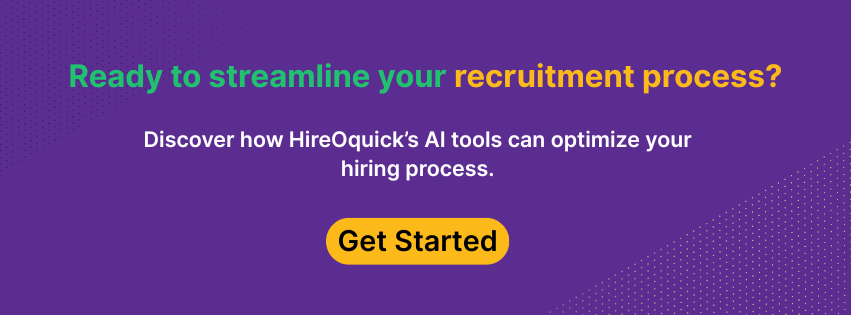
The Future of the Recruitment Process: More Tech, More Human?
Looking ahead, what does the future of recruitment look like? More tech, definitely. AI will keep evolving, offering new possibilities. Candidate experience is only going to become more important; people expect a smooth, respectful process. Remote hiring is, of course, here to stay for many roles and companies.
But here’s the interesting part: while technology is amazing and can do so much, I really don’t think it replaces the human touch. Building genuine relationships, getting a real feel for someone’s personality and how they’d fit culturally? That still takes people, recruiters, hiring managers. Technology should support that, make it easier by handling the repetitive stuff, perhaps, not get in the way or make things feel completely robotic. It’s about enhancing the human element, I guess.
Conclusion: Achieving Recruitment Mastery
So, winding down, what’s the takeaway? Getting your recruitment process running smoothly – streamlining it – genuinely makes hiring faster, costs less, and makes things better for everyone applying. It just does. It helps you land the right people for your team more effectively.
Yes, technology is a massive help, absolutely essential really in today’s landscape. But remember, that human element, the connection you build with candidates and within your team, that’s still absolutely key to great hiring. By focusing on both, by really mastering your recruitment process, you truly are on the path to attracting the best people out there and helping your business succeed.
Ready to give your hiring a makeover? Maybe start looking into some recruitment software solutions that fit your needs and, well, stick around for more tips!
FAQs
- Q: How can AI help reduce bias in the hiring process?
A: AI can standardize things like resume screening and initial interview questions to help eliminate subjective preferences or unconscious bias from early stages.
- Q: What are the most important features to look for in an Applicant Tracking System (ATS)?
A: Generally, key features people find essential include good automation capabilities for tasks, robust reporting and analytics, tools that help teams collaborate easily, and the ability to integrate with your other HR systems.
- Q: How do I measure the success of my streamlined hiring process?
A: Track key performance indicators (KPIs) like how long it takes to hire (time-to-hire), the cost involved (cost-per-hire), and how candidates feel about the process (candidate satisfaction scores).

